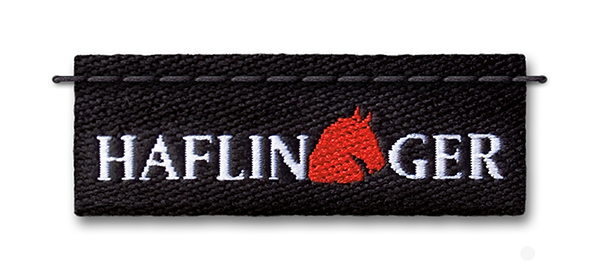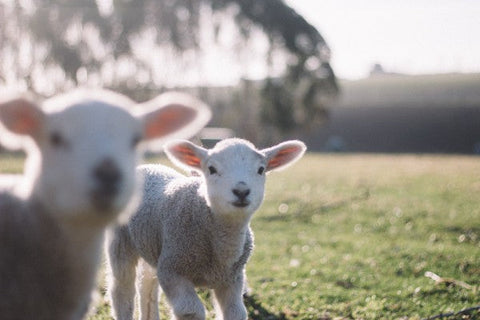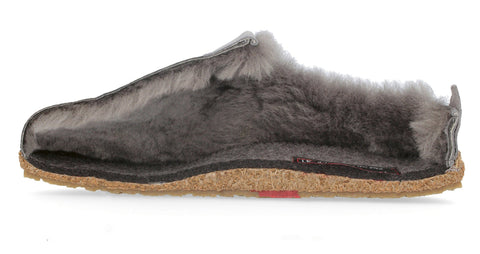Whether in the cold or warm season – everyone loves to snuggle up in textiles made of pure new wool! This natural material is used in a variety of products, from blankets and slippers to cozy winter clothing. Here’s everything you need to know about pure new wool (Schurwolle), its unique properties, and how to care for it.
What Is Pure New Wool?
We all know that wool comes from sheep. The soft fleece of these animals is a natural fiber mostly made of protein. But not all wool is the same! So, what exactly does pure new wool mean, and how does it differ from other wool types?
Pure new wool is obtained exclusively from living sheep and is freshly shorn once or twice a year. Recycled textiles or wool from slaughtered animals are not included. When no synthetic fibers or chemical substances are added, it’s referred to as pure new wool.
There are several quality types of sheep’s wool:
- Merino wool: finely crimped, soft, and highly luxurious
- Crossbred wool: fine yet strong, from crossbreeding Merino and coarse-wool sheep
- Long wool: glossy and lightly crimped
- Coarse wool: thick and less crimped
- Lambswool: from young lambs, especially soft and delicate
The Difference Between Wool and Pure New Wool
Not every wool is pure new wool. Wool can also come from dead animals or recycled materials, often resulting in lower quality. Pure new wool, on the other hand, comes only from the fleece of living sheep.
Common distinctions include:
- Tanner’s wool: from slaughtered animals
- Dead wool: from naturally deceased animals
- Recycled wool: made from reused textiles
- Pure new wool: shorn directly from live animals
How to Recognize Pure New Wool
Because of its warming and breathable qualities, pure new wool is used in blankets, carpets, sweaters, and slippers. To identify genuine Schurwolle, look for textile abbreviations:
- WV = pure new wool
- WO = recycled wool
Other examples: WP for alpaca, WS for cashmere, WY for yak, WA for angora.
How Pure New Wool Is Made
From the sheep in the meadow to the finished textile, several steps are involved. Sheep are usually shorn in spring when their fleece is at its strongest. The wool is then sorted by color and quality, cleaned, carded, dyed, and spun into yarn, which is later woven into fabrics or felted into slippers, blankets, or clothing.

The Unique Properties of Pure New Wool
Wool has been used for thousands of years — and for good reason. It offers numerous natural benefits:
- Breathable and moisture-absorbing: absorbs up to 33% of its dry weight in moisture without feeling wet. Perfect for breathable felt slippers.
- Temperature-regulating: keeps warmth in during winter and cools in summer thanks to its natural air pockets.
- Water- and dirt-repellent: lanolin (natural wool grease) makes it resistant to stains and easy to maintain.
- Odor-neutralizing: resists sweat and other unpleasant odors.
- Durable and elastic: keeps its shape, resists wrinkles, and is naturally flame-retardant.
Sustainable Wool
Wool is a renewable, eco-friendly resource — but sustainability depends on animal welfare and clean production. Pure new wool is sustainable when no chemicals or synthetic fibers are added and when it comes from humane, responsible farming.
Look for certifications such as organic or controlled animal husbandry when purchasing wool products. Though slightly more expensive, they ensure quality and ethical production.

How to Wash and Care for Pure New Wool
Caring for wool is easier than it seems: it’s naturally self-cleaning. Simply air it out regularly, especially in humid conditions. If washing is necessary, use lukewarm water and mild detergent — no wringing, rubbing, or high temperatures. Avoid the dryer; instead, press gently in a towel and air-dry flat.
Avoid: machine washing, fabric softeners, spinning, or tumble drying.
To protect against moths, keep lavender sachets near your wool items.
Conclusion
Choosing pure new wool means choosing natural comfort, breathability, and durability. Its temperature-regulating and self-cleaning properties make it the perfect material for Haflinger slippers — warm, hygienic, and sustainably made for everyday comfort.




Comments (0)
There are no comments for this article. Be the first one to leave a message!